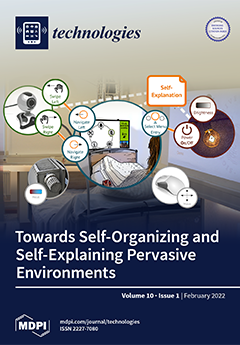Open AccessEditor’s ChoiceArticle
Assistive Technologies for Supporting the Wellbeing of Older Adults
by
Ioanna Dratsiou, Annita Varella, Evangelia Romanopoulou, Oscar Villacañas, Sara Cooper, Pavlos Isaris, Manex Serras, Luis Unzueta, Tatiana Silva, Alexia Zurkuhlen, Malcolm MacLachlan and Panagiotis D. Bamidis
Cited by 9 | Viewed by 4167
Abstract
As people age, they are more likely to develop multiple chronic diseases and experience a decline in some of their physical and cognitive functions, leading to the decrease in their ability to live independently. Innovative technology-based interventions tailored to older adults’ functional levels
[...] Read more.
As people age, they are more likely to develop multiple chronic diseases and experience a decline in some of their physical and cognitive functions, leading to the decrease in their ability to live independently. Innovative technology-based interventions tailored to older adults’ functional levels and focused on healthy lifestyles are considered imperative. This work proposed a framework of active and healthy ageing through the integration of a broad spectrum of digital solutions into an open Pan-European technological platform in the context of the SHAPES project, an EU-funded innovation action. In conclusion, the SHAPES project can potentially engage older adults in a holistic technological ecosystem and, therefore, facilitate the maintenance of a high-quality standard of life.
Full article
►▼
Show Figures





